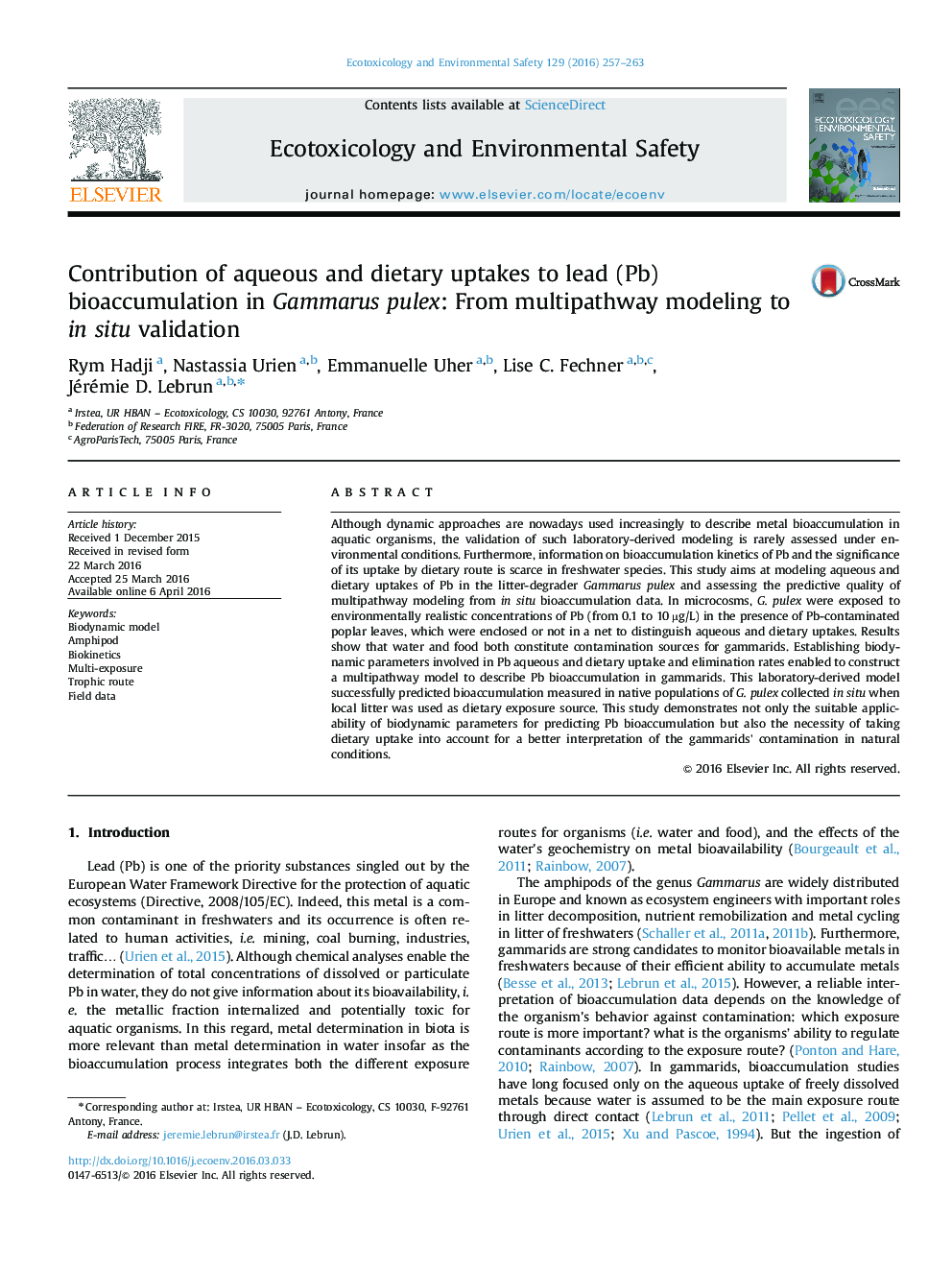| کد مقاله | کد نشریه | سال انتشار | مقاله انگلیسی | نسخه تمام متن |
|---|---|---|---|---|
| 4419267 | 1618934 | 2016 | 7 صفحه PDF | دانلود رایگان |

• Gammarus pulex is exposed to lead (Pb) by aqueous and dietary routes in microcosms.
• Water and food both are important sources of Pb contamination in gammarids.
• Both waterborne and multipathway models are generated from bioaccumulation kinetics.
• The in situ validation of laboratory-derived models is done from field data.
• Multipathway model successfully predicts bioaccumulation levels in native gammarids.
Although dynamic approaches are nowadays used increasingly to describe metal bioaccumulation in aquatic organisms, the validation of such laboratory-derived modeling is rarely assessed under environmental conditions. Furthermore, information on bioaccumulation kinetics of Pb and the significance of its uptake by dietary route is scarce in freshwater species. This study aims at modeling aqueous and dietary uptakes of Pb in the litter-degrader Gammarus pulex and assessing the predictive quality of multipathway modeling from in situ bioaccumulation data. In microcosms, G. pulex were exposed to environmentally realistic concentrations of Pb (from 0.1 to 10 µg/L) in the presence of Pb-contaminated poplar leaves, which were enclosed or not in a net to distinguish aqueous and dietary uptakes. Results show that water and food both constitute contamination sources for gammarids. Establishing biodynamic parameters involved in Pb aqueous and dietary uptake and elimination rates enabled to construct a multipathway model to describe Pb bioaccumulation in gammarids. This laboratory-derived model successfully predicted bioaccumulation measured in native populations of G. pulex collected in situ when local litter was used as dietary exposure source. This study demonstrates not only the suitable applicability of biodynamic parameters for predicting Pb bioaccumulation but also the necessity of taking dietary uptake into account for a better interpretation of the gammarids’ contamination in natural conditions.
Figure optionsDownload as PowerPoint slide
Journal: Ecotoxicology and Environmental Safety - Volume 129, July 2016, Pages 257–263